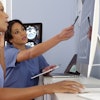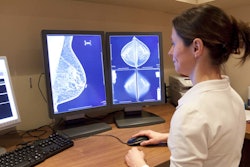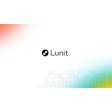
AI-supported mammography screening is effective in a nationwide, real-world setting, according to research published January 7 in Nature Medicine.
A team led by Nora Eisemann, PhD, from the University of Lübeck in Germany, found that compared with standard double reading, AI-supported double reading led to more breast cancers being detected without leading to significantly higher recall rates.
“Our findings substantially add to the growing body of evidence suggesting that AI-supported mammography screening is feasible and safe and can reduce workload,” the Eisemann team wrote.
Retrospective studies continue to highlight AI’s potential in radiology departments, including for breast imaging. Research has also suggested that the technology can be integrated into clinical workflows and aid radiologists in completing tasks. However, few prospective studies are available, which is one of the main critiques of AI in imaging studies.
One such prospective study, PRAIM (PRospective multicenter observational study of an integrated AI system with live Monitoring), is an observational, multicenter, real-world, noninferiority, implementation study. It seeks to compare the performance of AI-supported double reading to standard double reading among women ages 50 to 69. The women underwent organized mammography screening at 12 sites in Germany. Radiologists in the PRAIM study voluntarily chose whether to use the AI system (Vara MG, Vara).
Eisemann and colleagues described the initial results of the PRAIM study, for which 119 radiologists screened 463,094 women between 2021 and 2023. Of the total women, 260,739 were screened with AI support.
The team reported that AI-supported double reading led to more cancers being detected, recall rates being lower, and positive predictive values (PPVs) for recall and biopsy being higher.
| Comparison between AI-supported, standard double reading of screening mammograms | ||
|---|---|---|
| Measure | Standard double reading | AI-assisted double reading |
| Cancer detection rate (per 1,000) | 5.7 | 6.7 |
| Recall rate (per 1,000) | 38.3 | 37.4 |
| PPV (recall) | 14.9% | 17.9% |
| PPV (biopsy) | 59.2% | 64.5% |
The authors highlighted that with these results in mind, AI-supported double reading can improve mammography screening metrics. They called for “urgent” efforts to be made toward integrating AI-supported mammography into screening guidelines and promoting widespread adoption of AI in mammography screening programs.
The researchers did not directly assess the extent of reading workload reduction with AI integration. However, they reported that radiologists in the AI group spent less time interpreting exams deemed normal by the AI system compared with exams with no confident predictions and exams with a safety net.
“In a post hoc analysis assuming that all examinations tagged normal were not read by radiologists and were not forwarded to a consensus conference, we observed a 56.7% reduction in the reading workload,” they wrote. “Interestingly, this resulted in a significantly lower recall rate [−15.0%] while still improving the [cancer detection rate] by 16.7%.”
The team called for future studies to examine the downstream effects of AI-supported screening on overall program performance. These include interval cancer rates and stage-at-diagnosis distribution at subsequent screening rounds.
The full study can be found here.



















